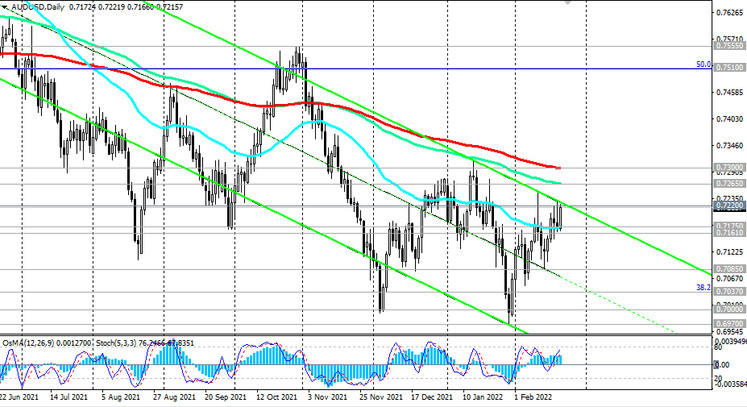Futures for major US stocks indices are rising, and the dollar is falling on Monday amid hopes for a diplomatic settlement of the crisis in Ukraine.
US President Joe Biden and Russian President Vladimir Putin have reached an agreement in principle to hold the summit. Its details will be discussed at a meeting between US Secretary of State Anthony Blinken and Russian Foreign Minister Sergei Lavrov on Thursday.
US markets are closed today for President's Day. More or less significant statistics will begin to appear on Tuesday, when at the beginning of the American trading session the PMI Markit indices on activity in the manufacturing and services sectors of the American economy will be published.
However, the most important macro data for the US will be released on Thursday, when at 13:30 (GMT) the second annual GDP estimate for the 4th quarter will be published. GDP data is one of the key (along with data on the labor market and inflation) for the Fed in terms of its monetary policy. Strong result strengthens US dollar; weak report on GDP has a negative impact on the US dollar. In the previous 3rd quarter, GDP grew by +2.3%, in the 2nd quarter of GDP - by +6.7%, in the 1st quarter of 2021 by +6.3%.
If the data points to a decline in GDP in the 4th quarter, then the dollar will be under pressure. Positive data on GDP will support the dollar and US stock indices. The first estimate was +6.9%. The second estimate assumes 4Q US GDP growth of +7.0%. This is a very positive indicator, which should support the dollar.
Meanwhile, some economists are predicting the Fed will raise interest rates 9 times in a row, bringing it to 2.50% by mid-2023.
"The economy is strong and inflation is well above our long-term target of 2%, so now is the time to begin the process of gradually returning the target band (the Fed's key interest rate) to more normal levels", New York Fed chief John Williams said during a virtual speech on Friday. “I think it would be appropriate to raise the target range at the next meeting in March”.
The Fed has also signaled that it will soon begin to reduce its balance sheet, which now stands at nearly $9 trillion. These are all positive factors for the US dollar. But so far it has been declining, including against major commodity currencies. Thus, the pair AUD/USD reached an intraday high of 0.7220 today, meeting resistance at the upper border of the descending channel on the daily chart.

Meanwhile, the Australian dollar received support today from the positive macro statistics released at the beginning of today's trading day. Thus, the PMI index in the manufacturing sector from Commonwealth Bank in February rose from 55.1 to 57.6 (the forecast was 56.1). The index of business activity in the service sector from Commonwealth Bank for the same period strengthened from 46.6 to 56.4 (the forecast assumed a decrease to 42.6 points). There are not so many statistics for Australia this week. Therefore, in the dynamics of AUD/USD, one should focus primarily on the dynamics of the USD.





